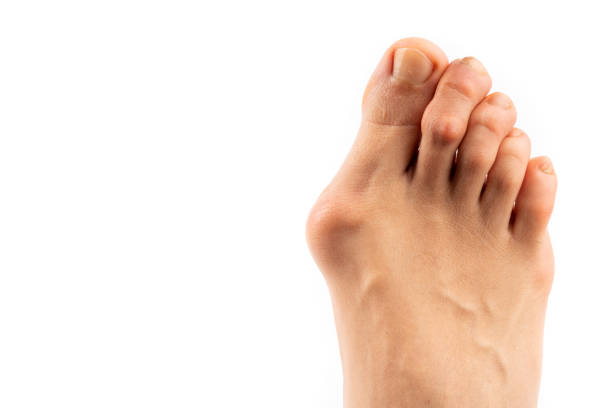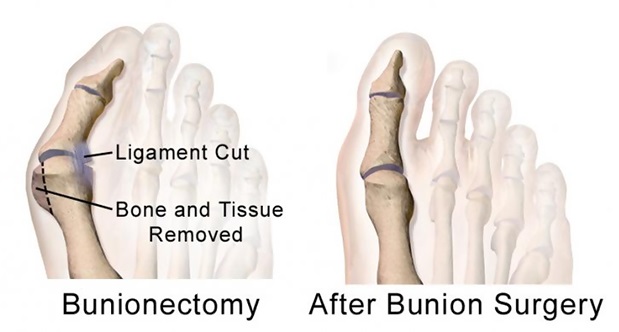Beyond Ugly Bumps: Demystifying Bunions and Finding Freedom with Podiatry
Bunions. The mere mention conjures images of unsightly bumps, agonizing pain, and a resigned shuffle that replaces a joyful stride. But fear not, fellow foot-lovers! While their presence can be unwelcome, bunions needn’t dictate your mobility or mar your well-being. Enter the champions of foot health: podiatrists. With their expertise and a plethora of treatment options, they stand ready to banish the bumbling of bunions and restore your steps to pain-free bliss.
Bunion Basics: Unmasking the Bulge
First, let’s dispel the myth that bunions are merely cosmetic concerns. These bony protrusions at the base of the big toe arise from misalignment of the joint, forcing it to deviate outwards. This, in turn, compresses the surrounding tissues, leading to inflammation, pain, and the formation of the dreaded bump. Genetics, ill-fitting footwear, and biomechanical imbalances are common culprits, but the good news? Bunions are far from a life sentence.
The Painful Saga: Bunion Blues and Their Impact
Bunions aren’t just unsightly; they can wreak havoc on your daily life. The constant friction and pressure create a symphony of discomfort, from throbbing pain to burning sensations. Corns and calluses develop as the skin tries to protect itself, further exacerbating the issue. Walking, once a source of joy, becomes a painful endeavor, affecting posture, gait, and overall well-being. But take heart! Don’t let bunions dictate your dance in life.
Conquering Bunion Battles: A Podiatrist’s Toolkit
The beauty of bunions? They’re not invincible! Podiatrists, the foot whisperers, have an arsenal of treatments to combat these bony bullies. Depending on the severity and your individual needs, you might encounter:
- Conservative Care: Like a foot fairy godmother, your podiatrist might weave magic with custom orthotics and footwear recommendations. These can guide your feet back into alignment, alleviating pain and preventing further progression. Physical therapy and targeted exercises can also strengthen muscles and improve support.
- Minimally Invasive Techniques: For moderate cases, procedures like laser therapy or cryoablation offer minimally invasive solutions. Laser therapy gently targets excess tissue, while cryoablation uses controlled freezing to reduce inflammation and discomfort. Both offer significant pain relief with minimal downtime.
- Bunionectomy: The Surgical Solution: In severe cases, a bunionectomy might be the ideal remedy. This surgical procedure realigns the joint, restoring proper bone positioning and eliminating the troublesome bump. Advancements in minimally invasive techniques have made bunionectomies less daunting, with faster recovery times and minimal scarring.
Finding Your Foot Hero: Choosing the Right Podiatrist
With so many valiant podiatrists fighting the good fight against bunions, choosing the right one is crucial. Look for board-certified specialists with experience in bunion treatment, someone who listens to your concerns and tailors an approach to your individual needs. Check patient reviews and testimonials, and prioritize finding a podiatrist you feel comfortable and confident interacting with.
Prevention is Key: Stopping Bunions Before They Bud
While bunions can be formidable foes, an ounce of prevention is worth a pound of (bony) cure. Here’s how to keep your feet happy and bunion-free:
- Embrace sensible footwear: Ditch the sky-high heels and narrow shoes, opting instead for comfortable styles with ample toe space and good arch support.
- Maintain a healthy weight: Excess weight puts undue pressure on your feet, contributing to bunion development.
- Strengthen your foot muscles: Regular foot exercises can improve support and stability, reducing the risk of misalignment.
- Listen to your feet: Don’t ignore early signs of discomfort. Seek professional advice at the first hint of a bump or pain.
Living Bunion-Free: Post-Treatment Care and Long-Term Management
Even after vanquishing the bumbling boney foe, vigilance is key. Following your podiatrist’s post-treatment instructions ensures proper healing and minimizes the risk of recurrence. Regular checkups allow for monitoring and early intervention if needed.


